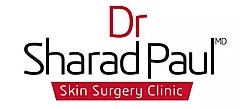Central Lakes, East Auckland, North Auckland, South Auckland, West Auckland > Specialised Primary Health Care >
Skin Surgery Clinic - Dr Sharad Paul
Specialised Primary Healthcare - Skin Cancer Service
Today
Description
Dr Sharad Paul established the Skin Surgery Clinic in 1996 with a mission to provide skin cancer surgery at an affordable cost. The clinic has one of the largest series of patients worldwide with over 150,000 patients treated, and over 50,000 procedures performed. In 2001, the clinic received a Clinical Excellence Award for "outstanding clinical achievement" in skin cancer practice from Waitemata District Health Board, and Dr Paul was awarded a Health Innovation Award in 2003 by the NZ Govt. Ministry of Health of helping reduce hospital waiting lists for skin cancer treatment. In 2015, the Skin Surgery Clinic was awarded the Ko Awatea International Award for leading improvement on a global scale, for "improving skin cancer management, education, communication and patient-centred care internationally." Dr Paul routinely teaches and lectures internationally in the field of skin and skin cancer.
Procedures/Treatments offered:
- Detection: mole and spot checks - diagnosis and skin cancer screening (including photography when needed)
- Skin Surgery: removal and testing of suspect lesions, moles and cancers (Basal, Squamous, Melanoma)
- Dermatological: cosmetic removal of moles and blemishes; treatments for skin conditions
- Skin Health: skin scans to assess skin health and sundamage / serums for skin protection / rejuvenation
We also offer an online spot check/digital consultation service*. Read more here
*A spot check is a skin cancer examination. This can be for one spot or several. This does not involve any prescriptions or treatments. If you require a procedure after an examination one can be scheduled for you. For those using the online spot check service, we can schedule you for the appropriate procedure after the consultation.
Staff
Dr Sharad Paul - Skin Cancer Expert (see below)
Allanah Knight - Nurse Manager
Alison Murray - Receptionist
Doctors
-

Professor (Dr) Sharad Paul
Skin Cancer Expert
How do I access this service?
Referral
GP or Health Provider Referrals: Referrals can be made using the EDI (paulskin) or via email (admin@skinsurgeryclinic.co.nz).
Contact us
Self Referrals: Patients can also make direct bookings with the clinic, if preferred. All procedure reports will be sent back to the patient's designated GP.
Make an appointment
Fees and Charges Description
We are a Southern Cross Affiliated Provider and an NIB first choice provider. NOTE: Insurers normally cover the cost(s) for the examination & procedure – some insurers do not cover checks if a procedure is not needed - it is recommended that you check your policy.
Online Spot Check: $60.00 + GST
Hours
| Mon – Thu | 8:40 AM – 6:00 PM |
|---|
Services Provided
New Zealand has a very high rate of skin cancer, when compared to other countries. The most common forms of skin cancer usually appear on areas of skin that have been over-exposed to the sun. Risk factors for developing skin cancer are: prolonged exposure to the sun; people with fair skin; and possibly over-exposure to UV light from sun beds. There are three main types of skin cancers: basal cell carcinoma, squamous cell carcinoma and malignant melanoma. Basal Cell Carcinoma (BCC) This is the most common type and is found on skin surfaces that are exposed to sun. A BCC remains localised and does not usually spread to other areas of the body. Sometimes BCCs can ulcerate and scab so it is important not to mistake it for a sore. BCCs occur more commonly on the face, back of hands and back. They appear usually as small, red lumps that don’t heal and sometimes bleed or become itchy. They have the tendency to change in size and sometimes in colour. Treatment Often a BCC can be diagnosed just by its appearance. In other cases it will be removed totally and sent for examination and diagnosis, or a biopsy may be taken and just a sample sent for diagnosis. Removal of a BCC will require an appointment with a doctor or surgeon. It will require a local anaesthetic (numbing of the area) and possibly some stitches. A small number of BCCs will require margin control surgery where pathological analysis in undertaken prior to completion of the procedure. Squamous Cell Carcinoma (SCC) This type of skin cancer also affects areas of the skin that have exposure to the sun. The most common area is the face, but an SCC can also affect other parts of the body and can spread to other parts of the body. The spreading (metastasising) can potentially be fatal if not successfully treated. A SCC usually begins as a keratosis that looks like an area of thickened scaly skin, it may then develop into a raised, hard lump which enlarges. SCCs can sometimes be painful. Often the edges are irregular and it can appear wart like, the colour can be reddish brown. Sometimes it can appear like a recurring ulcer that does not heal. All SCCs will need to be removed, because of their potential for spread. The removal and diagnosis is very similar to that of a BCC. Malignant Melanoma This is the most serious form of skin cancer. It can spread to other parts of the body and people can die from this disease. A melanoma usually starts as a pigmented growth on normal skin. They often, but not always, occur on areas that have high sun exposure. In some cases, a melanoma may develop from existing pigmented moles. What to look for: an existing mole that changes colour (it may be black, dark blue or even red and white) the colour pigment may be uneven the edges of the mole/freckle may be irregular and have a spreading edge the surface of the mole/freckle may be flaky/crusted and raised sudden growth of an existing or new mole/freckle inflammation and or itchiness surrounding an existing or new mole/freckle. Treatment It is important that any suspect moles or freckles are checked by a suitably trained practitioner. The sooner a melanoma is treated, there is less chance of it spreading. A biopsy or removal will be carried out depending on the size of the cancer. Tissue samples will be sent for examination, as this will aid in diagnosis and help determine the type of treatment required. A melanoma may need a wider excision, or sometimes a referral for sampling of lymph nodes. Immunotherapy, chemotherapy or radiotherapy may be required to treat for melanomas that have spread. A melanoma that is in the early stages can be treated more successfully and cure rates are much higher than one that has spread.
New Zealand has a very high rate of skin cancer, when compared to other countries. The most common forms of skin cancer usually appear on areas of skin that have been over-exposed to the sun. Risk factors for developing skin cancer are: prolonged exposure to the sun; people with fair skin; and possibly over-exposure to UV light from sun beds. There are three main types of skin cancers: basal cell carcinoma, squamous cell carcinoma and malignant melanoma. Basal Cell Carcinoma (BCC) This is the most common type and is found on skin surfaces that are exposed to sun. A BCC remains localised and does not usually spread to other areas of the body. Sometimes BCCs can ulcerate and scab so it is important not to mistake it for a sore. BCCs occur more commonly on the face, back of hands and back. They appear usually as small, red lumps that don’t heal and sometimes bleed or become itchy. They have the tendency to change in size and sometimes in colour. Treatment Often a BCC can be diagnosed just by its appearance. In other cases it will be removed totally and sent for examination and diagnosis, or a biopsy may be taken and just a sample sent for diagnosis. Removal of a BCC will require an appointment with a doctor or surgeon. It will require a local anaesthetic (numbing of the area) and possibly some stitches. A small number of BCCs will require margin control surgery where pathological analysis in undertaken prior to completion of the procedure. Squamous Cell Carcinoma (SCC) This type of skin cancer also affects areas of the skin that have exposure to the sun. The most common area is the face, but an SCC can also affect other parts of the body and can spread to other parts of the body. The spreading (metastasising) can potentially be fatal if not successfully treated. A SCC usually begins as a keratosis that looks like an area of thickened scaly skin, it may then develop into a raised, hard lump which enlarges. SCCs can sometimes be painful. Often the edges are irregular and it can appear wart like, the colour can be reddish brown. Sometimes it can appear like a recurring ulcer that does not heal. All SCCs will need to be removed, because of their potential for spread. The removal and diagnosis is very similar to that of a BCC. Malignant Melanoma This is the most serious form of skin cancer. It can spread to other parts of the body and people can die from this disease. A melanoma usually starts as a pigmented growth on normal skin. They often, but not always, occur on areas that have high sun exposure. In some cases, a melanoma may develop from existing pigmented moles. What to look for: an existing mole that changes colour (it may be black, dark blue or even red and white) the colour pigment may be uneven the edges of the mole/freckle may be irregular and have a spreading edge the surface of the mole/freckle may be flaky/crusted and raised sudden growth of an existing or new mole/freckle inflammation and or itchiness surrounding an existing or new mole/freckle. Treatment It is important that any suspect moles or freckles are checked by a suitably trained practitioner. The sooner a melanoma is treated, there is less chance of it spreading. A biopsy or removal will be carried out depending on the size of the cancer. Tissue samples will be sent for examination, as this will aid in diagnosis and help determine the type of treatment required. A melanoma may need a wider excision, or sometimes a referral for sampling of lymph nodes. Immunotherapy, chemotherapy or radiotherapy may be required to treat for melanomas that have spread. A melanoma that is in the early stages can be treated more successfully and cure rates are much higher than one that has spread.
- an existing mole that changes colour (it may be black, dark blue or even red and white)
- the colour pigment may be uneven
- the edges of the mole/freckle may be irregular and have a spreading edge
- the surface of the mole/freckle may be flaky/crusted and raised
- sudden growth of an existing or new mole/freckle
- inflammation and or itchiness surrounding an existing or new mole/freckle.
Disability Assistance
Wheelchair access
Public Transport
The Auckland Transport website is a good resource to plan your public transport options.
Parking
Free parking is available at the front of the building
Website
Contact Details
271A Blockhouse Bay Road, Avondale, Auckland
Central Auckland
-
Phone
(09) 828 6438
-
Fax
(09) 828 6432
Healthlink EDI
paulskin
Email
Website
Contact us online here
271A Blockhouse Bay Road
Avondale
Auckland 0600
Street Address
271A Blockhouse Bay Road
Avondale
Auckland 0600
Was this page helpful?
This page was last updated at 8:41PM on October 5, 2023. This information is reviewed and edited by Skin Surgery Clinic - Dr Sharad Paul.

